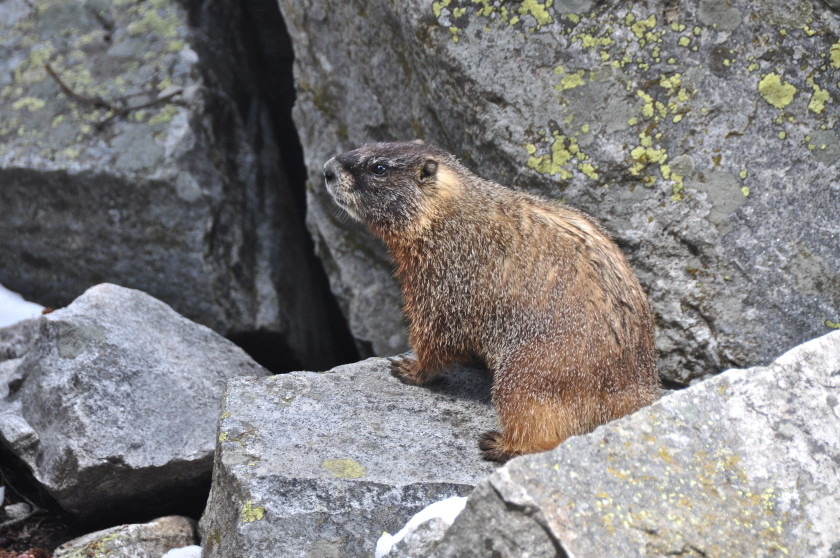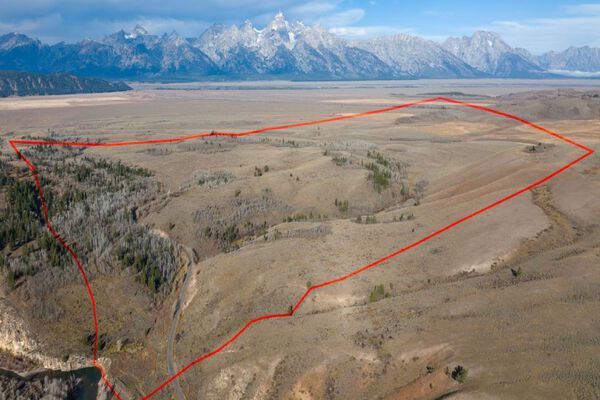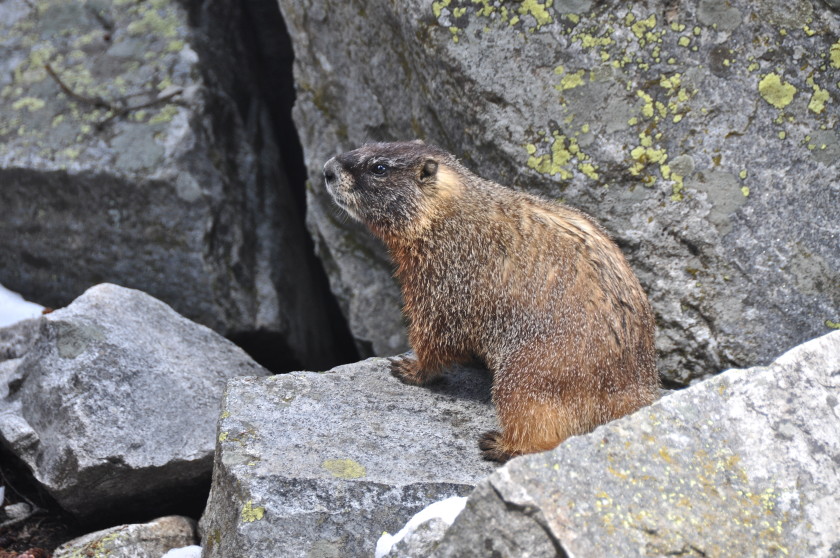
A marmot. Photo by Jenny King.
Summer is here and Grand Teton’s wildlife is taking full advantage of the abundance of food brought by heavy spring rains. Throughout the next few months, expect wildlife to be most active during dawn and dusk due to high mid-day temperatures.
• Wolf pups from successfully reproducing packs have now emerged from their dens. They do not stray too far from their den, rendezvous site, or the watchful eye of the adults. Pups are out and about, learning from the new world around them while playing and growing rapidly.
• Trumpeter swan eggs are hatching. Young swans, or cygnets, are typically light gray in color and can swim within 24 hours of hatching. They will be roughly 3.5 to 4 months old before they take their first flight.
• The spring birth pulse for Jackson Hole ungulates (mammals with hooves) is winding down. Most ungulate babies are on their feet and able to move the day they are born. Some, like bison, use the follower strategy, where the new calves stay with their mothers at all times. Others, like deer, elk, and pronghorn, use the hider strategy, where mothers often hide their newborn fawns or calves and return to them periodically to nurse.
• Moose are VERY protective of their young. Please be cautious and give them a wide berth.
• Marmots, one of the largest mammals in the squirrel family, are active and feeding primarily in the morning and evening and rest during the heat of the day.
• Neotropical birds, such as ruby crowned kinglets, western tanagers, and hummingbirds, have returned and are busy breeding and raising young.
• Grizzly bear 610 emerged from her den earlier this spring with 2 cubs of the year. If you are lucky enough to see them, please give them the space they deserve so that others can also enjoy their presence. Park regulations require that visitors stay 100 yards or further away from bears and wolves.
• Grizzly Bear 399 weaned her two, two-year-old offspring during early spring and has been largely behind the scenes during the spring breeding season, which lasts into July.
• First year black and grizzly bear cubs are growing rapidly and becoming much more mobile, allowing their family groups to travel widely in search of food.
• Mosquitoes are now out in force (but vary in abundance across the landscape), providing food to birds, bats, fish, and other species.
• This year’s abundant spring rains have resulted in tremendous vegetation growth, particularly among grasses and forbs, which will benefit many species of wildlife.
• As daily high temperatures rise with the season, mid-day wildlife activity will be reduced considerably.










